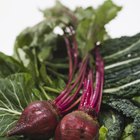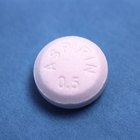
Photo by Jonna Fransa on Unsplash
Starches are complex carbohydrates found in grains, such as wheat, barley, and oats, as well as in other foods, including corn, potatoes and beans. They are crucial components of the human diet, and for centuries cleaners have also used them to treat freshly-washed clothing, especially shirts. The most common ingredient in contemporary laundry starch is corn starch, but it isn't the only one. In fact, commercial starches contain a host of dicey chemicals. You can avoid these by making your own starch from corn starch or—because it's made from potatoes—avodka.
The Purpose of Starching
Starch stiffens fabrics, and starched shirts, dresses, and other clothing items will be crisper and hold creases better if they are starched before ironing. The clothes will also look better for a longer period, so they don't have to be cleaned as often.
Another—perhaps more important—reason to use starch clothing is to make it easier to clean. Complex starch molecules attract perspiration and well as natural body and food oils. If these contaminants stick to the starch rather than to the fabric, they come off easier in the wash.
A Long List of Ingredients
All you really need to make starch is an extract from a starchy grain or vegetable, such as corn or potatoes. Most commercial laundry starches contain corn starch, but they also contain other chemicals that serve as stabilizers, preservatives, and fragrances. One commercial starch, for example, contains vinyl acetate polymer, which is the main ingredient in carpenter's glue. Another product contains:
- cyclocarboxypropyloleic acid
- sodium hydroxide
- sodium tetraborate
- tetrasodium EDTA
- castor oil
- sodium hyroxymethylglycinate
- dimethicone
- sodium metabisulfate
...as well as fragrances and dyes.
These extra ingredients give the starch a longer shelf life, but they aren't the ones your grandmother's grandmother used. Because they aren't naturally occurring carbohydrates, these commercial products may not attract dirt in the same way as traditional starches, and they usually smell synthetic.
You might not be as inclined to purchase a commercial starch after you discover how easy it is to make your own all-natural starch. Here are two common recipes:
Corn Starch and Water
You can find corn starch in any grocery store. Primarily a thickener for gravy and sauces, it also makes great face paint, shampoo, and deodorant. The recipe for making spray starch from corn starch is easy:
- Fill a saucepan with one pint of water.
- Add a tablespoon (or slightly more) of starch and stir well until it has all dissolved.
- Bring the mixture to a boil, then let it cool to room temperature.
- Add a few drops of essential oil for fragrance, if desired.
- Transfer to a spray bottle and use sparingly.
Vodka and Water
Making starch with vodka is even easier than making it with corn starch. Vodka is made from potatoes, which have a famously high starch content, and a vodka/water solution won't stiffen until you spray it on clothes and the water evaporates. Moreover, vodka won't leave a residue, so it's a better choice for dark clothing. Here's the recipe:
- Mix one part vodka with two parts water in a spray bottle.
- Shake the bottle and spray.
You don't need premium vodka. In fact, some users say that cheap vodka works better, probably because the starches haven't been refined.
Related Articles

How to Get Liquid Eyeliner off Clothes

How to Get Shoe Polish out of Clothes

Difference Between Soap & Synthetic ...

How to Clean Mud Off of White Pants

How to Remove Roller Ball Ink From ...

How to Dye a T-Shirt Using Beets

How to Clean Cotton-Polyester Blend ...

How to Clean Airwalk Ugg-Style Boots

How to Wash Nomex

How to Remove Pickle Juice Stains

Substitute for Manioc Starch

How to Remove Ink From Nylon

Can You Use Starch on Linen Pants?

How to Bleach Khakis White

How to Remove Yellow Stains on White ...

How to Remove Sweat & Deodorant Stains ...

How to Make Your Own Aged Potato Vodka ...

Uses of Cotton Fabric

How to Get Tie-Dye Colors to Stay Bright

Why Do White Clothes Turn Yellow in ...
Writer Bio
Chris Deziel has a bachelor's degree in physics and a master's degree in humanities. Besides having an abiding interest in popular science, Deziel has been active in the building and home design trades since 1975. As a landscape builder, he helped establish two gardening companies.